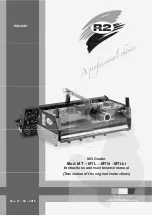
Appendix
50
Rev. B 09/2011
Pi20
9
9.1
Determination of Emissivity
Emissivity is a measure of an object’s ability to absorb and emit infrared energy. It can have a value
between 0 and 1.0. For example a mirror has an emissivity less of 0.1, while the so-called “Blackbody“
reaches an emissivity value of 1.0. If a higher than actual emissivity value is set, the output will read
low, provided the target temperature is above its ambient temperature. For example, if you have set
0.95 and the actual emissivity is 0.9, the temperature reading will be lower than the true temperature.
An object’s emissivity can be determined by one of the following methods:
1.
Determine the actual temperature of the material using an RTD (PT100), a thermocouple, or any
other suitable method. Next, measure the object’s temperature and adjust emissivity setting until
the correct temperature value is reached. This is the correct emissivity for the measured material.
2.
For relatively low temperatures (up to 260°C, 500°F) place a plastic sticker on the object to be
measured. This sticker should be large enough to cover the target spot. Next, measure the
sticker’s temperature using an emissivity setting of 0.95. Finally, measure the temperature of an
adjacent area on the object and adjust the emissivity setting until the same temperature is
reached. This is the correct emissivity for the measured material.
3.
If possible, apply flat black paint to a portion of the surface of the object. The emissivity of the
paint must be above 0.95. Next, measure the temperature of the painted area using an emissivity
setting of 0.95. Finally, measure the temperature of an adjacent area on the object and adjust the
emissivity until the same temperature is reached. This is the correct emissivity for the measured
material.
9.2
Typical Emissivity Values
The following table provides a brief reference guide for determining emissivity and can be used when
one of the above methods is not practical. Emissivity values shown in the table are only approximate,
since several parameters may affect the emissivity of a material. These include the following:
1.
Temperature
2.
Angle of measurement
3.
Geometry (plane, concave, convex)
4.
Thickness
5.
Surface quality (polished, rough, oxidized, sandblasted)
6.
Spectral range of measurement
7.
Transmissivity (e.g. thin films plastics)







































